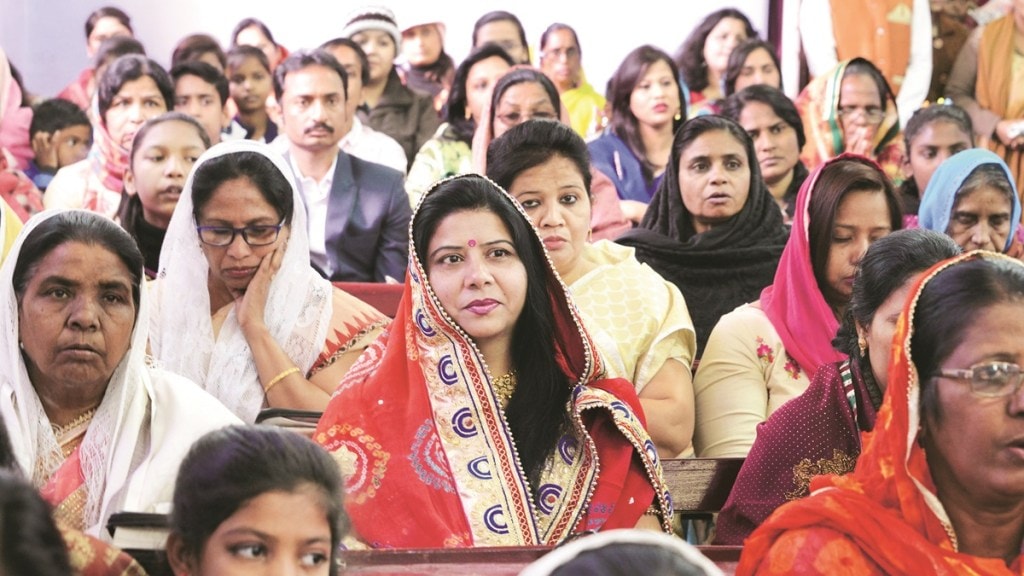It was the best of times, it was the worst of times.” This iconic line from celebrated British writer Charles Dickens’ 1859 novel A Tale of Two Cities explicates beautifully how good and bad exist simultaneously. A fiction set against a historical background, the novel, set in London and Paris, tells of the time before and during the French Revolution. Written close to two centuries ago, the book continues to be among the most read worldwide.
Not only Dickens’ A Tale of Two Cities, but American novelist Harper Lee’s historical fiction To Kill A Mockingbird is also one of the most read and celebrated globally. Published in 1960, the book won Lee the coveted Pulitzer Prize the next year and has sold over 40 million copies.
While millions of books have been written on myriad subjects and settings, some stand out in terms of critical and audience’s reception.
According to Tarini Uppal, senior commissioning editor at Penguin Random House India, “The world over, family as a setting is commonly used in fiction because of its versatility and universality. Fiction, unlike non-fiction, helps us understand the inner workings of the mind, the lives of people behind closed doors and, most importantly, it deals with things people don’t like to talk about.” This setting can be found among the Indian “subcontinent’s greatest works like Arundhati Roy’s The God of Small Things, Amitav Ghosh’s The Shadow Lines and Kiran Desai’s The Inheritance of Loss,” she enumerates. While Roy’s book won the 1997 Booker Prize, The Shadow Lines was awarded India’s coveted Sahitya Akademi Award and Desai’s book won the 2006 Booker Prize.
Speaking on other fictional settings, Uppal says, “The genre of fiction has expanded beyond our imagination. Some of these like mythological fiction and historical fiction have broken all records and done exceptionally well.”
Chitra Banerjee Divakaruni, whose novels The Palace of Illusions and The Last Queen are fictional retelling of epics Mahabharata and Ramayana, respectively, from their female protagonists’ perspective, says, “Our Indian mythology and epics are so powerful and complex and deal with so many timeless human issues. War, leadership, family relationships, love and the position of women in society and in the world are just a few of these. They have such fascinating characters that we continue to relate to them. That is why they are evergreen. And that is why I wanted to explore them further. My special interest was to explore the inner motivations of strong women characters such as Draupadi and Sita by giving them their own voice.” Although novels based on mythology are being churned out world over, the Indian literary scene is replete with such books, including Amish Tripathi’s The Shiva Triology and Ashwin Sanghi’s The Krishna Key, among others.
Dystopia, war, conflict
“It was a bright cold day in April, and the clocks were striking thirteen.” This opening line to George Orwell’s celebrated novel 1984 is enough to tell you what is ahead in his dystopian world. In this book, published in 1949 during the Cold War, the writer paints a bipolar world where dictatorship, state propaganda, censorship, nationalism and a constant state of war are the norm. Such is the cultural influence of this novel that terms like Big Brother, newspeak and doublethink are now part of everyday vocabulary, and Orwellian having become almost synonymous with anything totalitarian.
The impact of the then-prevailing political conditions are evident: A world war, and its after-effects, a world divided into two blocs in a state of cold war, prevalence of dictatorship and censorship. As per news reports, the writer had himself said that he was partly inspired by the 1944 meeting of the Allied leaders at the Tehran Conference. His colleague Isaac Deutscher had reported that Orwell was “convinced that Stalin, Churchill and Roosevelt consciously plotted to divide the world” at Tehran.
From Margaret Atwood’s The Handmaid’s Tale, which has sold millions of copies worldwide and has been adapted into a feature film, an Emmy-winning show and a graphic novel, to HG Wells’ The Time Machine and Ray Bradbury’s Fahrenheit 451, to name a few, some books show that dystopia not only remains a celebrated fictional setting but a popular one too. While a repressive totalitarian state remains a popular premise, climate and science-caused apocalypse are becoming popular.
In India, “imagined worlds and dystopia are slowly but emphatically emerging theme as Indian speculative fiction comes into its own,” says Thomas Abraham, MD, Hachette India.
Wars, conflict and migration, sadly, have been a part of the human existence since forever, and so have been the books written on these premises. Sri Lanka’s decades-long civil war was the setting for The Seven Moons of Maali Almeida by Sri Lankan writer Shehan Karunatilaka, which won him the 2022 Booker Prize. The book is set in the 1980s with Maali Almeida, a dead photographer as the central character. Almeida sets of to solve his own murder and also hopes to retrieve pictures and to persuade them to share them to expose the brutalities of the war.
“I’m not part of the people who suffered,” Karunatilaka said in an interview. However, he remembered the curfews, and his mother making him look away so that he would not see the dead bodies. However, his wife’s family had brutal experiences of the war, the writer said. The Sri Lankan civil war has been well documented. However, he felt the people have not emotionally dealt with it. “Those who have memories don’t talk about it. We should write about it and try to make sense of it, because we don’t tend to do that in Sri Lanka; we tend to just move on,” the writer said.
Every forced migration, caused by war, conflict, dictatorship and oppression are brutal, with that caused by India’s Partition standing out. Often termed as the largest and most rapid migration, an estimated 14.5 million people migrated between India and Pakistan within four years. The toll it had, the grief of being uprooted from one’s roots, the atrocities meted out on the way, have been documented extensively through non-fiction and fiction alike.
In fact, India’s bloody partition has written extensively by fiction writers.
“In my view, it has not been written about much,” says former diplomat and writer Navtej Sarna. “It has been written more in India’s vernacular languages like Punjabi, Urdu and Bengali, but it has not been exposed to the world and even several parts of India, through English, that much,” he opines. Savage Harvest: Stories of Partition is a collection of heartbreaking stories of partition from north India, which Sarna translated from Punjabi to English. The original book in Punjabi was written by his father, Sahitya Akademi Award winner writer Mohinder Singh Sarna.
Tomb of Sand, which won writer Geetanjali Shree the 2022 International Booker Prize, traces the journey of an 80-year-old women, who slips into depression following her husband’s death, and decides to travel to Pakistan to address the unresolved trauma of her teenage experience of the bloody partition. The book speaks about several things, such as the invisibility of women, but partition and the migration forced by it again serves as a profound setting.
Writer Manreet Sodhi Someshwar has already published two books—Lahore and Hyderabad—in her Partition trilogy. The novels tell tales of lesser talked about places that bore the brunt of the unfortunate event in 1947. Alike Sarna, Someshwar, too, feels that Partition as a subject is not written about much. “ The literature on the 1947 Partition is rich but scarce. The kafilas that erupted in the wake of India’s independence are considered the largest migration in modern human history. Yet our literary engagement with that monumental catastrophe has been sporadic,” she says. Her third book is on Kashmir, which is still bearing the brunt of the events that unfolded in the Indian subcontinent 75 years ago.
According to her, conflict and migration are written much about as the “writers engage with the reality around them. Conflict and migration are a big slice of the human experience, both in peace and war. The world today is engaged in active wars (Russia-Ukraine war has entered its second year), conflicts within domestic borders in various nations, and the ongoing flight of people fleeing persecution, violence, strife at home (South Americans streaming to the US, North African migrants to Europe, Afghans fleeing to India…) The theme might be considered ‘celebratory’ when it reflects the active migration of choice in a globalised world where people are moving out of choice. In either case, migration is accompanied by conflict: uprooting oneself to seek life in an unfamiliar place is a challenge always. This provides rich material to writers to explore.”
Feminist writing
Fiction that focus on women-centric themes also finds prominence among readers and critics alike. “The quest for agency in women’s writing has been unmissable,” says Abhivyakti Singh, commissioning editor at Hachette India. “The intersection of womanhood and statehood has been an active space in literature,” he adds.
In 2007, the Nobel Prize in Literature was awarded to British Zimbabwean novelist Doris Lessing, “that epicist of the female experience, who with scepticism, fire and visionary power has subjected a divided civilisation to scrutiny”, it said.
Shree, in her work, has vividly described women’s experiences, especially their invisibility. “We always knew mother had a weak spine,” reads a line in her debut novel Mai. “Those who constantly bend get this problem,” she adds.
Edith Wharton’s The Age of Innocence, which won her the 1921 Pulitzer Prize, The Bluest Eye by Toni Morrison and Little Women by Louisa May Alcott are some of the books written on this setting.
All of Divakaruni’s novels have women as central characters. “For so long, women have been pushed to the margins of traditional stories and objectified and not given their own voices.” Speaking of how she approaches the theme, the writer explains, “First of all, I try to do careful and respectful research. All events that I am presenting in The Palace of Illusions and The Forest of Enchantments have been presented already in earlier versions of the epics (such as Kamba Ramayan, Adbhuta Ramayan, Krittibaasi Ramayan, Kashiram Das’s Mahabharat, etc). I am not making them up. Secondly, it is important to understand that giving women characters their voice and agency does not mean we have to put down male characters-that is mistaken, divisive thinking. For instance, Sita’s greatness is not dependent on putting Ram down. It is a true and beautiful thing in itself.”
A distinct element of women-centric writing is that although these have women as central characters, the experiences read absolutely distinct from one another.
Explaining this, Tarana Hussain Khan, the writer of The Begum and the Dastan, says, “Women writing about women is a deeply personal experience because women have unique experiences, face challenges that shape the trajectory of their lives and inhabit socio cultural contexts. All these factors along with the writing styles and techniques create distinctive writing.”
Speaking of newer trends emerging in the Indian literary scene, Singh says, “Stories from northeastern states or from lesser-represented regions in the country are coming to our tables more. It has been a welcome and exciting development.”







